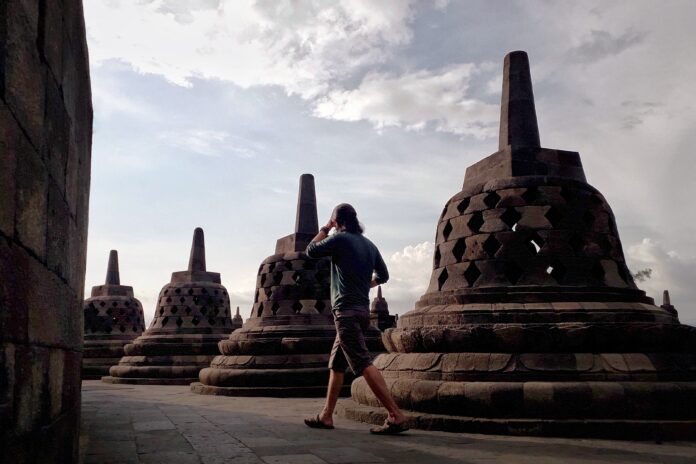The fascination with the historical Borobudur Temple remains notably high, particularly among international tourists, consistently leading to the complete utilization of visitor quotas set by the temple’s management. Seizing the opportune post-pandemic momentum, administrators are actively investing in further enhancements and developments, exemplified by the upcoming establishment of the Kujon Art Village.
The renowned Borobudur Temple complex is slated for enrichment with the integration of the Kujon Art Village, a multifaceted project set to commence construction at the close of November 2023.
This envisioned cultural hub encompasses diverse amenities, ranging from an amphitheater and museum to a souvenir art market, culinary offerings, parking facilities, and a shuttle service.
Acting as the Governor of Central Java, Nana Sudjana, shed light on the development, detailing that the Kujon Art Village will unfold across a 10.74-hectare expanse, strategically positioned approximately 1.5 kilometers from the Borobudur Temple. These details were articulated during a recent interview at Nana’s office.
Nana emphasized that the Kujon Art Village is anticipated to emerge as a compelling tourist attraction, serving as a complementary feature to the already iconic Borobudur Temple. Positioned as a super-priority destination, the Borobudur Temple complex aims not only to guide tourists to the historic temple but also to offer an immersive experience in the surrounding area.
For both local and international tourists, the Kujon Art Village, once completed, promises a diverse array of crafts and culinary delights. Nana articulated, “There will be a culinary place for food vendors, and there will be other places. So, the land provided for the Borobudur art market is around 10 hectares. God willing, the groundbreaking for the Borobudur Art Village is planned for the end of November 2023.”
Febrina Intan, CEO of Taman Wisata Candi Borobudur, Prambanan and Ratu Boko, supplemented these insights by highlighting the substantial capacity of the Kujon Art Village to accommodate thousands of traders currently positioned in zone two of the Borobudur Temple. Following the village’s completion, these traders will find a new home in this designated area.
Febrina further emphasized that the revitalization process in zone two, previously occupied by traders, aims to create a more pleasant environment for visitors exploring the Borobudur Temple complex.
“Visitors heading to Borobudur will use electric vehicles. Thus, there will be no more vehicles in zone two, as it is now. Consequently, the Borobudur Temple’s surroundings will be cleaner, greener, and more comfortable,” explained Febrina.
As reported earlier, the strategic visitor quotas set by the management of the Borobudur Temple consistently witness full utilization, with both local and international tourists actively participating. Jamaludin Mawardi, the General Manager of Taman Wisata Candi Borobudur, shared that in July alone, the recorded number of foreign tourist visits reached an impressive 22,000, with 17,000 tourists ascending the temple structure.
At present, the temple visits predominantly attract foreign tourists from a myriad of countries, including Malaysia, Singapore, Korea, Germany, Spain, and the Netherlands.























